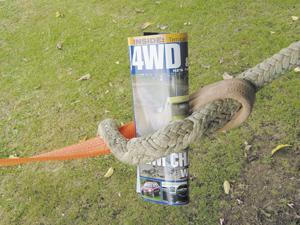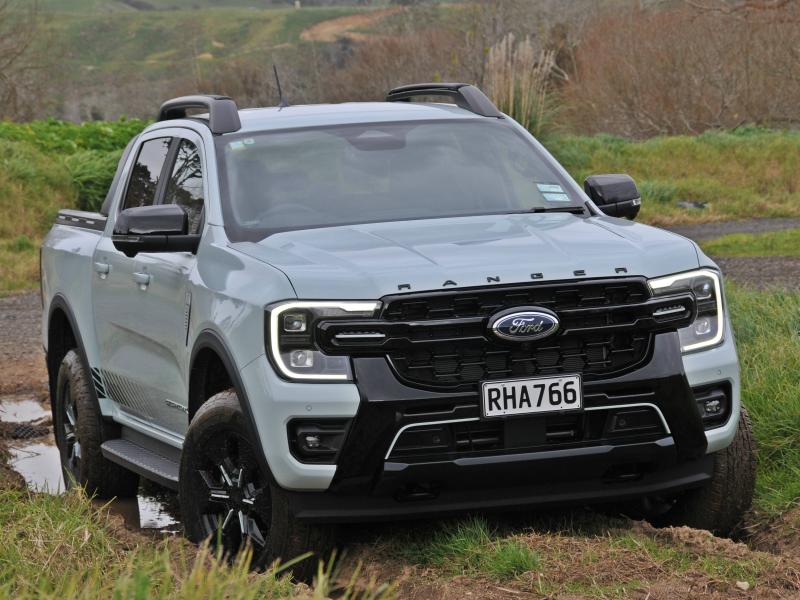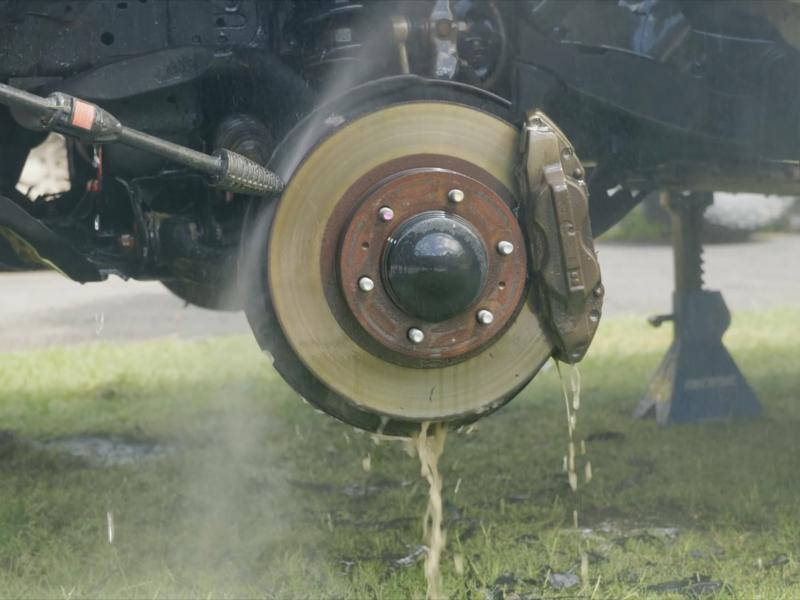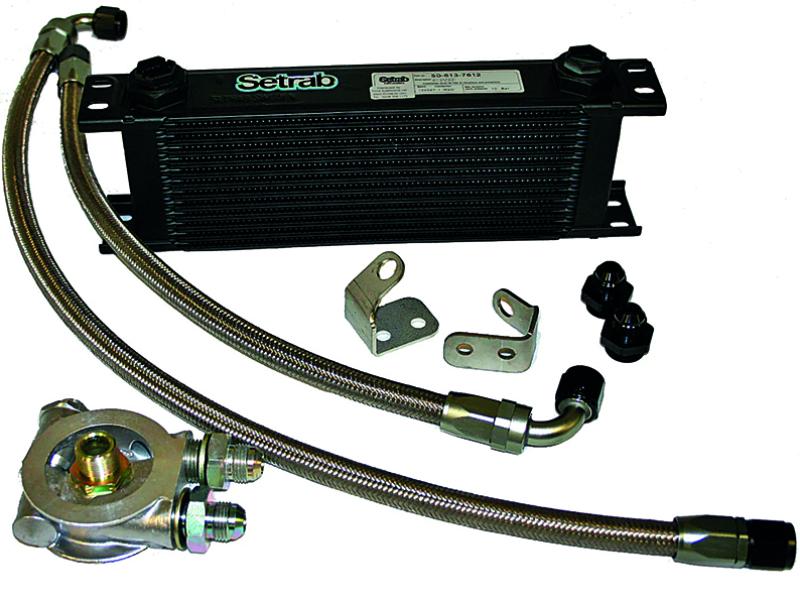A rolled up copy of NZ4WD makes a great joiner
Weight. The weight of vehicle is the total weight, including all equipment, luggage, fuel and passengers on board.
The quickest and easiest way to recover a stuck vehicle is to tow it with an accompanying vehicle. This also can be the quickest way to damage one or other of the vehicles, or their passengers, as the forces applied to both vehicle and equipment are huge.
Before heading off-road it’s essential that the vehicle’s recovery points are up to the task. Most so-called recovery points are only designed for steady on-road towing.
Vehicle manufacturers seem not to want to know about off-road recovery or, more likely, the liability for the damage when a recovery point lets go. Ideally, towing recovery points should be connected directly to the chassis, one on each side of the vehicle, front and rear.
They can also be fitted to front and rear cross members, in line with the chassis rails to allow the load to be spread over the full length of the chassis.
Equipment
A stretch or snatch recovery is only undertaken with a nylon rope, which is very elastic. It can stretch up to 30 percent of its original length under tension.
Other ropes lack stretch or elasticity and are likely to damage equipment.
The elasticity is what makes snatch ropes so effective but also why they are potentially dangerous if mistreated. If a nylon rope breaks, it flies back like a rubber band and may catapult a towing point towards the other vehicle or a bystander.
We use the kinetic energy released from the stretched rope to our advantage but we do so with tremendous caution.
Nylon ropes come in various sizes but, as a minimum, a 24mm diameter, 6m length, with a 12,000kg breaking load should be used for off-road vehicle recovery. Available in three-strand rope, they also come as braided rope and flat straps.
Unfortunately, flat straps only have about 20 percent elongation and just 8000kg breaking load due to the stitching required in construction. Most people tend to use flat straps, due to their low cost, ease of storage and because very few people know how to properly splice loops into conventional ropes.
Snatch ropes and straps require proper care and maintenance, if they are to remain safe to use. Don’t leave your rope wrapped around the front bumper or spare wheel. Ultraviolet light damages the rope, so keep it stored out of direct sunlight. Also keep it away from exhaust heat and battery acid, for obvious reasons.
After every outing thoroughly clean the mud off it and, to prolong its life, keep it in a sack or breathable canvas bag. Always check the condition of a rope before using it. If it’s cut, frayed, damaged or if the stitching is broken, do not use it.
Using a snatch strap as a normal tow rope will reduce its elasticity and render it useless. Your snatch rope or strap is a low cost item, so consider replacing it every couple of years as continued use and environmental factors reduce its effectiveness.
Always use the eye of a snatch strap to attach to the vehicle and never thread the strap through itself as this will weaken the strap and cause the stitching to break.
If you attach a snatch rope to the recovery points on the vehicle then ensure you use shackles that are properly rated, usually to a working load limit (WLL) of 3.25 or 4.75 tonnes. Shackles should be discarded if the pin will not turn freely, which often means they have been overloaded.
Joining snatch straps
There’s only one method we recommend to join two snatch straps. That is to thread the eye of strap ‘A’ through the eye of strap ‘B’. Then thread the other end of strap ‘B’ all the way through the eye of strap ‘B’ – the same eye that went through strap ‘A’.
Then, to stop the straps binding together permanently, roll up a copy of NZ4WD and place between the two straps. Alternatively, use a hardwood rope joiner.
Remember that whatever you use to stop the straps locking together may become a missile, if a rope should break. The heavier the item, the more dangerous it is.
Forces involved
Understanding of the forces required to recover a vehicle is a good idea.
Assuming the vehicle to be recovered is in good working order and doesn’t have flat tyres or a mechanical seizure, then there are three main factors to consider:
Ground Surface. The nature of ground surface affects the required force to induce initial movement. For example, a vehicle will require approximately 50 percent of its total weight to be applied to recover it from a bog as opposed to, say, 14 percent of its total weight applied to recover it from grass. (See table below)
As an example, a vehicle weight of 2000kg in shallow mud will require a pull co-efficient of 33 percent. By multiplying the vehicle weight by the co-efficient we get effort required to move the vehicle. In this example, 2000kg multiplied by 33 per cent equals 666kg and that’s roughly the effort required to shift it.
Gradient. The gradient up which a vehicle is to be recovered is the gradient resistance and you must factor this in.
It may only be a short part of the total distance or it may cover a long hill climb but, either way, it is the starting gradient that is important.
For practical purposes, the gradient resistance is taken as 1/60 of the weight of the vehicle for each degree of the slope.
The formula is the gradient (in degrees) divided by 60, the sum of which is multiplied by the weight of vehicle.
Using our earlier example (the 2000kg vehicle) up a 15-degree slope in shallow mud is …
2000 (kg) multiplied by 33 percent (resistance) plus the sum of 15 (degrees) times 2000 (kg) divided by 60, which is equivalent to 1160kg of effort to shift the vehicle.
Now, we’re not suggesting you employ a mathematician for every recovery, just trying to point out that there are extreme forces involved in a recovery and all the conditions need to be taken into consideration when deciding the best and safest way to recover a vehicle.
Snatch or stretch recovery
There are two ways to make a recovery, the softly, softly approach and the “go like hell” method. The first option is the safest.
When undertaking a kinetic energy or snatch recovery, the towing vehicle reverses to the stuck vehicle and the rope or strap is connected and snaked on the ground to allow tangle free deployment. If using a 9-metre strap then you need 2-3m slack on the ground.
Before commencing, check there is not a rock or log wedging the vehicle. Dig mud or dirt away from the wheels, if necessary.
Only three people should be involved in the recovery; the two drivers and one assistant (marshal). All passengers should get out of the vehicles and be standing well outside the recovery zone.
Once everyone is in position and ready, the assistant signals the drivers. Both vehicles drive off at 2000rpm in low second gear. The towing vehicle will be slowed or even halted when the rope stretches to its maximum.
At this point, the buildup of energy, through elongation of the strap, is transferred from the rope to the stuck vehicle, as the rope contracts, and it should become free. If it is not recovered on the first attempt, repeat the process.
Remember, it is better to take up speed slowly and move the vehicle a little at a time than to catapult it into the back of the towing vehicle. If it remains stuck after the third attempt, check again for hidden obstacles.
Never use a chain, wire rope or any other non-stretch connection for a snatch recovery, as serious breakage and/or damage will occur.
Short Rope
When using a long strap the vehicle being towed can act like a pendulum, if it lacks grip, and will slide all over the place. Using a very short rope greatly reduces the pendulum effect and adds control to the situation.
A short 1.5m rope is ideal for controlling the towed vehicle and keeping it directly behind. This works very well, especially if the rope is attached to opposite sides of each vehicle. In all cases low first gear is used.
Wire rope and pulleys
Wire ropes can successfully be used with pulley blocks to reduce the loads on a vehicle towing a heavily stuck vehicle. This technique is widely used in the “Teams Recovery” events.
The idea is similar to using pulley blocks when winching to reduce the load but instead of using a winch, a vehicle is used to drive forwards slowly. The pulley blocks are also used to change the direction of the pull, around corners.
Equipment used varies but generally you need 25-30 metres of wire rope or more, four pulley blocks, a selection of rated shackles, tree protectors, tachoman or cam clips for wire rope and strong leather gloves for each person.
Most of this is rather weighty and people won’t individually carry all of it but spread it between several vehicles. The bulkiest item is the coil of wire rope.
Essentially, it involves using one vehicle to tow a stuck vehicle through a series of pulley blocks. The more pulley blocks used the lighter the load on the towing vehicle, which can be towing from level ground with better traction some distance away.
Problems arise, in this recovery situation, because communication between drivers is difficult, if they end up out of sight. While this may be an effective method of recovery it should only be used by those who have had proper training in the techniques involved, and are fully aware of all the dangers.
Several of the more pro-active Clubs provide the necessary training and several commercial 4WD trainers include this within their advanced recovery courses.







